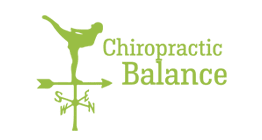Skeletal strength is built in our teenage years – but high-calcium foods, vitamin D and exercise help at any age. The health of your bones and muscles are vital as they help you stay upright, strong, and capable of living a happy and productive life. Without the health of either of these, your quality of life diminishes significantly. One way to keep both your bones and muscles healthy is to get regular chiropractic care. Here are some key factors in maintaining strong bones.
Remember that teenage years are key
Until about the age of 30, our bodies are still building bone and the teenage years are the crucial period in this process – osteoporosis has been called “a pediatric disease with geriatric consequences”.
Watch your calcium intake
A healthy, balanced diet should usually contain everything the body needs for strong bones, primarily calcium and vitamin D. NHS guidelines advise a daily calcium intake of about 700mg, although in the US and elsewhere the target is 1,000mg or higher. However, postmenopausal women do not absorb as much calcium and suffer from greater bone loss, so supplements may be needed. Adolescent girls, athletes and those with lactose intolerance are among other groups who may need supplementation.
Eat well
We are taught from a young age that milk builds strong bones, but there are many non-dairy foods high in calcium, such as tofu, nuts, sardines, chickpeas, fortified cereals and green leafy vegetables. High intake of green and yellow vegetables has been linked with increased bone mineralisation during childhood and the maintenance of bone mass in young adults.
Monitor your vitamin D level
The body needs vitamin D to absorb calcium properly – and a lack of it can lead to bone deformities such as rickets or osteomalacia. You can also boost your intake of vitamin-D rich foods (such as eggs or fatty fish). At-risk groups, including people with darker skin and those who do not spend time outdoors (such as people in care homes), should consider following this guidance all year.
Exercise
Weight-bearing exercise is vital in maintaining bone health throughout life. Running, brisk walking, weight training and yoga are all good exercises. A study of nearly 75,000 runners and 15,000 walkers found that the former were roughly half as likely to develop arthritis as the latter. Even people who have osteoporosis can and should – with a doctor’s approval – do regular exercise. The National Osteoporosis Society is a good resource for information.
Get enough protein
While protein deficiency is very rare, there is some evidence that a low intake decreases calcium absorption. Older women seem to benefit particularly from higher protein consumption. In a study of more than 144,000 postmenopausal women, higher protein intake was associated with a lower risk of fractures and higher bone density.
Maintain a healthy weight
Being very underweight, or following an extremely low-calorie diet, are significant risk factors for bone loss. One study of women following a 925-calorie-a-day diet showed that they experienced significant bone loss, even while following a resistance-training programme.
Get adjusted regularly
Regular chiropractic adjustments maintain your joints in good working order. A chiropractor reduces dysfunction within the spine, this aides to prevent joint restriction and promotes a proper range of motion and normal weight bearing throughout the musculoskeletal system. Robust joint function is a cornerstone of bone health.


